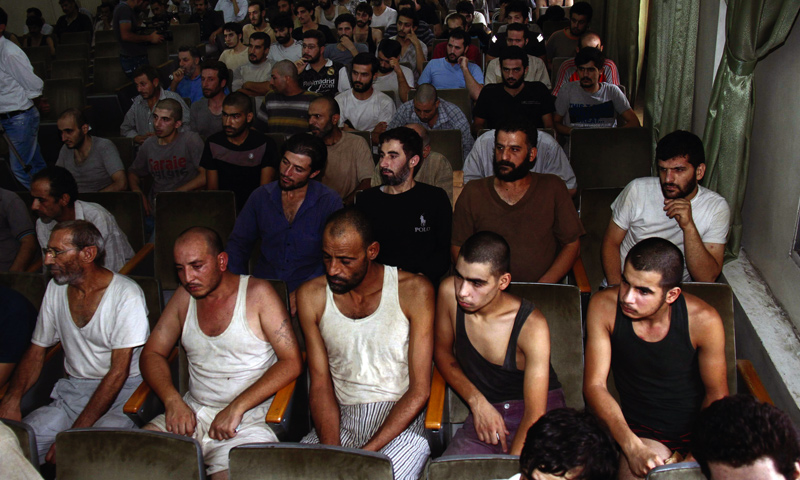Enab Baladi – Ninar Khalifa
Social media pages and networks covering the issue of Syrian detainees, as well as personal accounts and news agencies, have circulated information about the Syrian regime’s recent release of dozens of detainees and forcibly disappeared persons.
Some detained family members published new photos of those released, showing the horrific conditions they had experienced during their years of detention, which were very extreme to the extent that their personal features were hard to recognize.
The regime released a very limited number of detainees despite the pressure exerted by some countries and human rights organizations to release the detainees, for fear of the spread of the novel coronavirus (COVID-19) pandemic in its prisons.
Even though the regime approved the legislative decree No. 6 granting “general amnesty” for crimes committed before 22 of last March, which extended the scope of crimes included by a previous amnesty decree No. 20 declared in September 2019, the number of those released remained very few, compared to tens of thousands whose fate is still unknown.
The rationale behind the amnesty decree
The Syrian Network For Human Rights (SNHR) has documented the release of 83 detainees since the “general amnesty” was issued until the date of this report.
In an interview with Enab Baladi, Nour al-Khatib, the official responsible for the department of detainees in SNHR, said that only two cases of these releases were from Saydnaya Military Prison and that the amnesty did not include any releases from security branches.
Regarding the circumstances surrounding the release of prisoners, al-Khatib clarified that most inmates were released from central prisons in the Syrian provinces, after serving more than half or quarter of their prison sentence before they were included in the pardon decree.
Al-Khatib underlined that the majority of those released appeared before the so-called “Counter-Terrorism Court” (CTC), while a few were referred to the “Military Field Court.”
Moreover, the “general amnesty” has excluded a substantial segment of detainees, according to al-Khatib.
Syria’s amnesty decrees do not often include those convicted on terrorism charges, but mainly felony offenders, and perpetrators of misdemeanors and offenses, according to the data of the SNHR.
“The regime limits the decrees’ application solely to include individuals and groups it wishes to pardon. Besides, the decrees may cover a small number of detainees, not exceeding a couple of dozen in total, in order to give some appearance of credibility to the regime.”
The Syrian regime has charged the vast majority of detained human rights activists, politicians, media workers, and demonstrators with several cumulative offenses, including terrorism offense, and that is why it established the Counter-Terrorism Court under Act No. 22 of 2012.
Warnings against Coronavirus spread in detention centers
According to the chairperson of the SNHR, Fadl Abdel-Ghani, the Syrian regime, through its recent “amnesty” decree, aims to circumvent pressures excreted by organizations and countries that fear the spread of COVID-19 among tens of thousands of detainees in its prisons, by taking inadequate executive measures which ultimately lead to freeing a minimal number of prisoners.
In coincidence with the worldwide outbreak of the coronavirus and the reporting of confirmed infections in Syria and neighboring countries, officials and human rights organizations warned against the arrival of the pandemic to the regime’s detention centers, as well as the emergence of new humanitarian catastrophe among the detainees.
In a previous interview with Enab Baladi, Human Rights Watch (HRW) researcher, Sarah Kayali, highlighted that the calls to release detainees are hindered by several obstacles. First of all, the regime’s government does not disclose the number of detainees held in its prisons. Kayali added that the substantial incidence of torture in the detention centers of the Syrian regime, and the enforced disappearance of detainees, in addition, the death of many of them a while ago, are all considered as obstacles to hinder these calls.
According to statistics released by the SNHR, which was updated last March, more than 146,000 persons are still being detained or forcibly disappeared.

